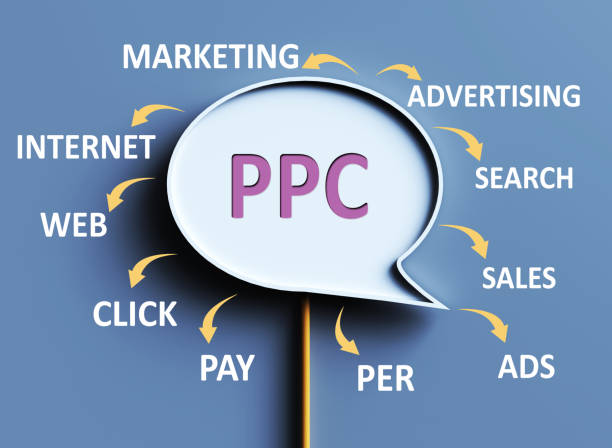Social media platforms offer powerful opportunities to reach your audience through pay-per-click (PPC) strategies. Whether you are running ads on Facebook, Instagram, or LinkedIn, PPC strategies allow you to attract the right users while managing your advertising budget effectively. Let us take a detailed look at how you can refine your approach to maximize your return on investment (ROI).
What Are Social Media PPC Strategies?
Pay-per-click strategies on social media refer to advertising campaigns where you pay a fee each time someone clicks on your ad. These ads can appear in various formats, including sponsored posts, banner ads, or stories. PPC strategies are not just about driving clicks; they are designed to target specific demographics, promote your brand, and generate leads or sales.
For businesses, PPC advertising on social media can be one of the most effective methods to increase ROI, as it allows you to monitor performance and adjust campaigns in real time.
Why Should Businesses Use PPC Strategies on Social Media?
Social media has billions of users. By using PPC strategies, you can connect with your ideal customers without wasting time and money on irrelevant audiences.
Benefits of Social Media PPC Strategies
- Precise Targeting: Social media platforms allow you to target users based on location, age, gender, interests, and more.
- Cost Control: You decide how much to spend and can adjust your budget as needed.
- Real-Time Insights: Detailed analytics show how your ads are performing, helping you make improvements.
- Faster Results: Unlike organic posts, PPC campaigns deliver immediate visibility to your audience.
PPC strategies let you stay competitive in a crowded space while offering measurable results.
How to Choose the Right Social Media Platform for PPC Strategies
Each social media platform offers unique advantages for PPC campaigns. Choosing the right one depends on your business type and audience.
Facebook and Instagram
Both platforms are ideal for visual content and offer diverse ad formats. Use Facebook to reach a broad audience and Instagram for younger, image-driven users.
LinkedIn is perfect for business-to-business (B2B) companies. Ads here can target professionals, industries, or specific job titles.
Pinterest and TikTok
These platforms cater to creative and trend-savvy audiences. They are especially useful for retail, lifestyle, and beauty brands.
YouTube
As the second-largest search engine, YouTube combines video marketing with PPC strategies. Use it to engage audiences through educational or entertaining video content.

Crafting Winning PPC Ads for Social Media
Creating an effective PPC ad requires more than just putting together a catchy headline and an image. Here are some steps to guide you:
Step 1: Define Your Goals
Do you want more website visits, higher sales, or brand awareness? Clearly outline what you want your ads to achieve.
Step 2: Focus on Your Audience
Use the platform’s targeting options to pinpoint the right audience. Understanding their preferences and needs is crucial.
Step 3: Design Compelling Visuals and Copy
Visuals should grab attention, while your copy should clearly communicate the benefits of your offer.
Step 4: Include a Strong Call to Action
Encourage users to take immediate action with phrases like “Shop Now,” “Learn More,” or “Get Started.”
Step 5: Test and Refine Your Ads
Run A/B tests to determine which version of your ad performs best. Experiment with different visuals, headlines, and offers.
Setting a Budget for Your Social Media PPC Strategies
Budgeting plays a critical role in the success of your PPC campaigns. Setting a realistic budget ensures you do not overspend while maintaining effectiveness.
Tips for Budget Planning
- Start Small: Begin with a small budget to test your strategy and increase spending as you see results.
- Focus on High-Performing Ads: Identify which ads generate the most clicks or conversions and allocate more budget to those.
- Set a Daily Limit: This helps you avoid spending more than you can afford in a single day.
Remember, the key is to focus on value, not just cost. Spending strategically will lead to better results.
Measuring the Success of Your PPC Strategies
Tracking performance is essential to understanding whether your PPC strategies are working. Without proper measurement, you may be wasting money on ineffective campaigns.
Key Metrics to Monitor
- Click-Through Rate (CTR): Measures how often people click on your ad compared to how many see it.
- Cost Per Click (CPC): Tells you how much you are paying for each click.
- Conversion Rate: Shows the percentage of users who take the desired action, such as making a purchase.
- Return on Ad Spend (ROAS): Compares the revenue generated by your ads to what you spent on them.
Regularly analyze these metrics and adjust your campaign accordingly.

Common Mistakes to Avoid in Social Media PPC Strategies
Even the best-planned campaigns can fall short if you make avoidable mistakes. Here are a few common ones:
Overlooking the Audience
Failing to target the right audience can result in wasted ad spend and low engagement.
Ignoring Analytics
Metrics provide insights into performance. Without them, you cannot know what is working or what needs improvement.
Neglecting Mobile Users
A significant portion of social media traffic comes from mobile devices. Make sure your ads are optimized for mobile screens.
Best Practices for Social Media PPC Strategies
To achieve the best results, follow these proven practices:
- Use High-Quality Images and Videos: Visual content should stand out and reflect your brand.
- Keep It Simple: Avoid overloading your ads with too much text or too many elements.
- Test Multiple Campaigns: Try different ad formats to see what resonates best with your audience.
- Stay Updated on Trends: Social media platforms frequently update their algorithms and features.
Following these tips will help you improve your strategy and make your ads more impactful.
The Role of Retargeting in PPC Strategies
Retargeting is a valuable tool that can help you reach users who have already interacted with your business.
How Retargeting Works
If someone visits your website but does not make a purchase, retargeting ads can remind them of your products. These ads often appear on their social media feed, encouraging them to return and complete the transaction.
Benefits of Retargeting
- Higher Conversion Rates: Engage users who are already familiar with your brand.
- Personalized Messaging: Customize ads based on the user’s behavior.
Retargeting keeps your brand in the minds of potential customers, making it easier to turn interest into action.

How Social Media PPC Strategies Fit Into Your Marketing Plan
PPC strategies should complement your other marketing efforts. When combined with organic content, email marketing, and search engine advertising, they can provide a more comprehensive approach to growing your business.
Integrating PPC With Organic Posts
Organic posts build your brand’s voice, while PPC ads bring immediate attention to your products or services. Together, they create a balanced strategy.
Using PPC to Test Content
Ads can help you test which types of content perform well before incorporating similar themes into your organic strategy.
Conclusion
Social media PPC strategies are an effective way to maximize your ROI while reaching your target audience. By choosing the right platform, creating engaging ads, and monitoring performance, you can drive meaningful results for your business. Avoid common pitfalls, set realistic budgets, and use retargeting to keep potential customers engaged.
With careful planning and consistent effort, your social media PPC strategies can become a powerful tool in your marketing toolkit.









[…] first step in optimizing your Google Ads for maximum ROI is to understand your target audience. After all, what’s the point of spending money on ads that […]